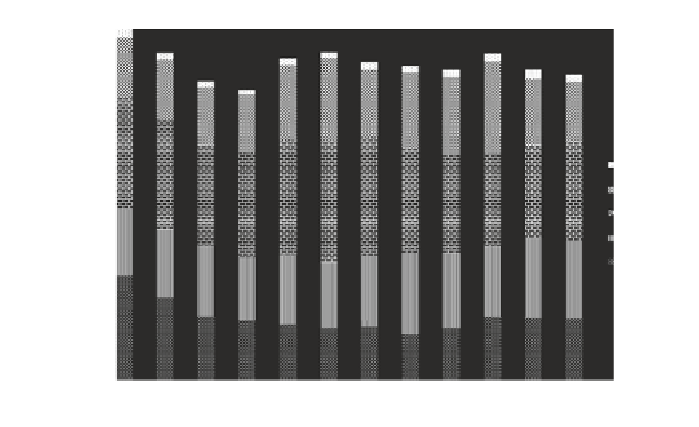Environmental Engineering Reference
In-Depth Information
7.2 Forest Harvesting in Italy
7.2.1 Official Statistics
In Italy forests cover about 87,592 km
2
(29 % of the total land area), of which
42 % is coppice forest (INFC
2007
). The main sylvicultural system adopted is
coppice with standards, applied with a rotation period varying between 15 and
35 years. Stands are thus even-aged, made by 40-200 trees per hectare with an
age varying from two to three times the rotation period (Ciancio et al.
2006
). At
the end of the rotation period, harvesting activities are performed by clearcutting
between November and April. This type of sylviculture mainly provides wood for
energy even if it does not succeed in satisfying the internal consumption.
Small clearcuts in coppice forests (for areas generally under 3-10 ha, depend-
ing of local laws), simply has to be communicated to the Regional authority and to
the Italian Forest Service (Corpo Forestale dello Stato—CFS) by the forest owner.
For larger clearcuts a formal harvesting project has to be approved by the Regional
authority. Both communications and authorizations data are collected, analyzed
and published by ISTAT.
In Fig.
7.1
, data from National Statistics Agency (Istituto Nazionale di Statistica—
http://agri.istat.it
—visited 07/2012) on the total volume of wood harvested from for-
ests are drawn for the years from 1999 to 2010. Data is reported for the whole Italian
area and for five macro-regions. Throughout these years, the average harvested vol-
ume from forest at national level amounts to almost 7,700,000 m
3
y
−
1
(accounting
for 0.5 % of growing stock), of which more or less 68 % is fuelwood.
9000000
8000000
7000000
6000000
Islands
South
Center
North East
North West
5000000
4000000
3000000
2000000
1000000
0
Fig. 7.1
Temporal trends of wood harvested from forests in Italy (
data source
ISTAT)




